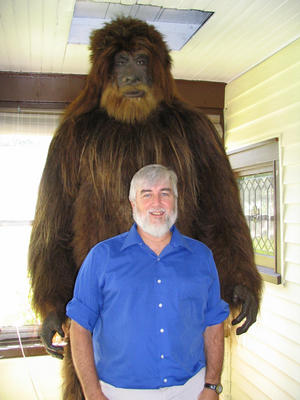
March 2, 2008

March does not bring Spring easily and without a fight to the state of Maine. It calls forth my wanderlust, as talks pop up and investigative traveling for me to the South is on the horizon. Trips call me away from the 100-plus-inches worth of snow in Portland, and out of the cobwebs of February.
In two newspapers in the state today, separate articles have been published of my forthcoming talks and treks.
The Maine Sunday Telegram contains a good interview in conjunction with my Wednesday noontime, March 5th appearance at the Portland Public Library. It also gives a hint of a trip I’ll be taking soon.
The Midcoast’s Village Soup gives insights into why cryptozoology is of interest within Maine libraries this year. I speak at the Belfast Free Library on Monday, March 3rd.

The Field Guide to Bigfoot and Other Mystery Primates
On an elusive quest
Author mines the mysteries of nature in his search to document animals.
By Ray Routhier Staff Writer
March 2, 2008
Loren Coleman is a leading authority on some diverse topics.
He has a master’s degree in clinical social work and has worked for years as a researcher and consultant in the field of suicide prevention and school violence, all over the country.
But he also has degrees in anthropology and zoology, and over the years he’s become a national figure in cryptozoology, the area of documenting new or unknown animals. Cryptozoology includes the study of legendary mystery creatures like Bigfoot or the Abominable Snowman, as well as the search for not-yet-documented birds, reptiles or cats.
Coleman, 60, is a former adjunct professor at the University of Southern Maine and has written 30 books on cryptozoology and related fields. He’s also consulted on TV shows like NBC’s “Unsolved Mysteries,” the History Channel’s “Monster Quest,” and A&E’s “Ancient Mysteries.”
He lives in Portland.

Q: Are there overlaps between your two fields, cryptozoology and suicide prevention?
A: There are research and interview skills that are very useful in both fields. I think that the whole intriguing part of school violence and suicide prevention is that suicide is definitely a mystery and yet there are some patterns and trends and some human involvement in that I need also to use in my investigation of cryptozoology, because in cryptozoology it always starts, number one, with the witness, the eyewitness. So I really come into the field as an investigative journalist in many ways. I want to know the anthropology of the situation, or the zoology of the situation, but also I understand that a lot of people make misidentifications, mistakes. Hoaxing is not that common, but certainly the human element involved in both understanding suicide as well as looking at cryptozoological investigations is paramount for me.

Q:What is the standard definition of cryptozoology?
A: Cryptozoology is the study of unknown or hidden animals. Animals yet to be classified as zoological species. Cryptozoology is really a method of investigation. During the Victorian era, when people went exploring wilderness areas, they were practicing cryptozoology. Back then it was called romantic zoology or romantic natural history. So the Victorians in the pith helmets going into the deep jungle, they were coming across new animals, animals not yet accepted by Western science. We still see that same situation. Most new animals are known by the local people, it’s just that it’s never been important for them to know whether or not it’s in a zoological text.

Some of these animals were extinct, and were rediscovered, such as the whole controversy going on right now with the ivory-billed woodpecker. In cryptozoology, the big three or four, the Abominable Snowman, Bigfoot, and the Loch Ness Monster, and then number four is the sea serpent, those big four got all the publicity. But in my book Cryptozoology A to Z: The Encyclopedia of Loch Monsters, Sasquatch, Chupacabras, and Other Authentic Mysteries of Nature, there are 200 entries of creatures around the world that we’re looking for right now. They can be a small reptile reported in Japan, or a [marsupial] tiger in Australia.
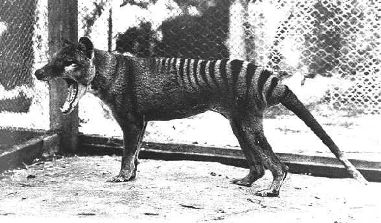
Q: Do you think the big four, as you call them, maybe give cryptozoology a bad name since they seem so far-fetched?
A: Oh yeah, definitely. In my years of being in the field, ridicule is certainly a part of the game. I could come out of an academic meeting (when he was at the University of Southern Maine) and somebody who had met me for the first time would come over to me and say “Oh you’re the guy who studies the little green men.” I’ve never been involved in ufology (study of UFOs), I’ve never been involved in ghost stories. I deal with animals. How I usually rebut them is by saying I’m interested in animals and I’m interested in tangible evidence, I’m not interested in “woo woo” stories. So if you’re talking about Bigfoot or you’re talking about Nessie, it’s been made so ridiculous in cartoons or the media, that I usually have to get through that so I can talk about a small cat we’re investigating off the coast of Japan, and there’s some good reports of it, it looks like it’s a new animal. Last week there were scientific journal articles on three new salamanders being found.
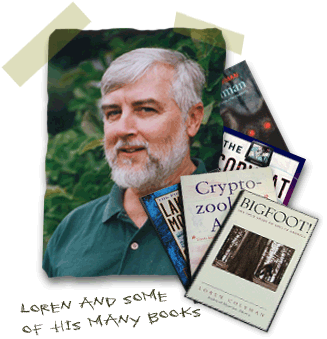
Q: Do you go out in the field much yourself?
A: Well, the last two years you’ve probably heard about the Maine Mutant, the creature that was reported in central Maine, which is (purported to be) a panther-hyena-like creature. I would go out in the field, and I ended up debunking. People said there was one of them killed on a road in Turner, and I arrived, looked at the body, looked at the photographs, and it was a chow dog. The locals said, “We finally killed the Maine Mutant.”
I’m going to Florida in March to investigate the skunk ape, a Florida version of Bigfoot. It’s much more like a chimpanzee than Bigfoot.
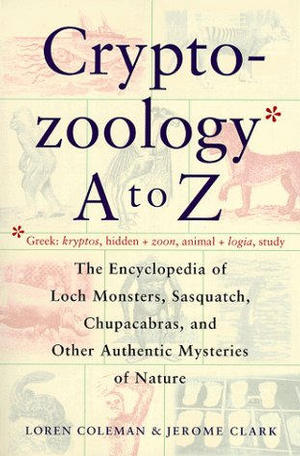
MEET THE AUTHOR
NAME: Loren Coleman
WHEN: Noon to 1 p.m. Wednesday
WHERE: Portland Public Library, 5 Monument Square. 871-1700. www.portlandlibrary.com
WHAT: Coleman, a Portland cryptozoologist and author of some 30 books on cryptozoology, will discuss two of his works: The Field Guide to Bigfoot and Other Mystery Primates and Cryptozoology A to Z: The Encyclopedia of Loch Monsters, Sasquatch, Chupacabras, and Other Authentic Mysteries of Nature
WHAT ELSE: Coleman also will be speaking at 6 p.m. Monday at the Belfast Free Library, 106 High St. 338-3884.
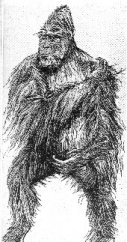
Meanwhile, people are getting their news up the coast of Maine via the Village Soup:
Arts & Entertainment: Cryptozoologist speaks of unsolved mysteries at Belfast Free Library
Belfast (March 2): Loren Coleman, one of the world’s leading cryptozoologists, will speak at 6 p.m. Monday, March 3, at the Belfast Free Library.
Coleman will talk about his study and searches for cryptids — animals that may or may not exist. His interest in cryptids began when he was 12 and began asking questions about the Abominable Snowman.
As Coleman did not find the replies satisfactory, he set about on a career to find the answers for himself. He graduated from Southern Illinois University at Carbondale, majoring in anthropology and minoring in zoology. He holds a master’s degree in psychiatric social work from Simmons College.
Author of dozens of books and articles on crytozoology, in 2003, Coleman established the International Cryptozoology Museum in Portland. He has worked as an on- and off-camera consultant to the History Channel, NBC-TV’s “Unsolved Mysteries,” the Discovery Channel and other television programs
Coleman has traveled to every state in the United States except Alaska, as well as throughout Canada, Mexico, Scotland and the Virgin Islands. He has interviewed witnesses of Hairy Hominoids, Lake Monsters, Giant Snakes, Mystery Felids, Mothman, Thunderbirds and other cryptids.
An interview with Coleman appears in “Tales of the Cryptids: Mysterious Creatures That May or May Not Exist,” by Kelly Milner Halls, Rick Spears and Roxyanne Young, a selection being considered for the Maine Student Book Award.
This program is free and open to all ages. For more information contact the library at 338-3884, ext. 24.
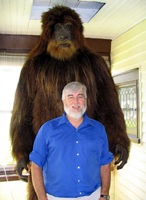
Want me to do a talk at your location? A book signing? Contact me at lcoleman@maine.rr.com directly.

About Loren Coleman
Loren Coleman is one of the world’s leading cryptozoologists, some say “the” leading living cryptozoologist. Certainly, he is acknowledged as the current living American researcher and writer who has most popularized cryptozoology in the late 20th and early 21st centuries.
Starting his fieldwork and investigations in 1960, after traveling and trekking extensively in pursuit of cryptozoological mysteries, Coleman began writing to share his experiences in 1969. An honorary member of Ivan T. Sanderson’s Society for the Investigation of the Unexplained in the 1970s, Coleman has been bestowed with similar honorary memberships of the North Idaho College Cryptozoology Club in 1983, and in subsequent years, that of the British Columbia Scientific Cryptozoology Club, CryptoSafari International, and other international organizations. He was also a Life Member and Benefactor of the International Society of Cryptozoology (now-defunct).
Loren Coleman’s daily blog, as a member of the Cryptomundo Team, served as an ongoing avenue of communication for the ever-growing body of cryptozoo news from 2005 through 2013. He returned as an infrequent contributor beginning Halloween week of 2015.
Coleman is the founder in 2003, and current director of the International Cryptozoology Museum in Portland, Maine.
Filed under Abominable Snowman, Bigfoot, Books, Breaking News, Classic Animals of Discovery, Cryptomundo Exclusive, Cryptotourism, CryptoZoo News, Cryptozoologists, Cryptozoology, Eyewitness Accounts, Footprint Evidence, Ivory-Billed Woodpecker, Loch Ness Monster, Media Appearances, Men in Cryptozoology, Museums, Mystery Cats, New Species, Photos, Pop Culture, Proto-Pygmies, Public Forum, Reviews, Sasquatch, Sea Serpents, Skunk Apes, Television, Thylacine, Yeti